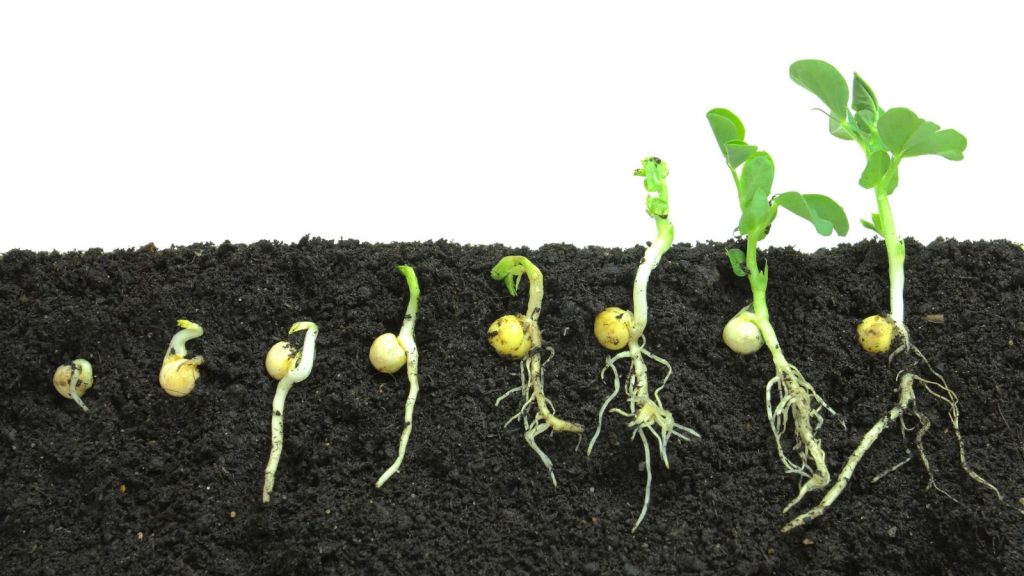Tiny Seeds, Big Wonders: Explore How Plants Begin
Seeds Germination Experiment For Class 5
Curiosity Questions:
-
Have you ever wondered how a tiny seed grows into a big plant?
-
Why do some seeds sprout quickly while others take a long time?
-
What do seeds need to start growing, and how can we observe it at home?
STEM Challenge Introduction:
In this exciting hands-on experiment, we will explore how seeds grow and what helps them sprout. You’ll sprout seeds at home, observe their transformation, and classify different types of seeds based on their shape, size, and color. This activity helps you understand the magic of germination one of the first steps in a plant’s life cycle and encourages you to become a scientist in your own kitchen.
Materials Required:
-
2 transparent plastic/glass containers or small bowls.
-
2 types of seeds (e.g., moong and chana or rajma and mustard seeds).
-
Water (room temperature).
-
Cotton or tissue paper (unbleached preferred).
-
A clean tray or plate.
-
Notebook and pencil for observations.
-
Ruler (for measuring sprout length).
-
Optional: Magnifying glass.
-
Eco tip: Reuse old containers and paper napkins to make it more sustainable.
Safety Precautions:
-
Wash hands before and after handling seeds.
-
Handle glass containers with care.
-
Ensure water is not spilled around to avoid slipping.
-
Seek adult supervision while handling sharp objects (like scissors, if used to trim paper).
Step-by-Step Process:
-
Soak Seeds: Soak two types of seeds (e.g., moong and chana) in separate bowls with water for about 8 hours or overnight.
-
Drain & Prepare: Drain the water. Place moist cotton or tissue paper in the containers or plates. Spread the soaked seeds over it.
-
Moisture Check: Sprinkle water over the seeds to keep them moist but not soggy. Cover lightly with another damp tissue or plate.
-
Place: Keep the setup in a warm, shaded area away from direct sunlight.
-
Observe Daily: For the next 5-7 days, observe the seeds twice a day. Keep them moist and note any changes.
-
Record: Use a ruler to measure the length of the sprouted roots and shoots. Draw or photograph the changes each day.
-
Classify: Once sprouted, classify seeds by:
-
Shape (round, oval, bean-like)
-
Color (light green, brown, black)
-
Size (tiny, medium, large)
-
-
Compare: Notice which seed sprouted faster, which grew longer, and which needed more water.
Expected Outcome:
By the 2nd or 3rd day, students will begin to notice small white roots emerging from the seeds. By Day 5 or 6, some seeds will develop tiny shoots (stems and leaves). The moong seeds are likely to sprout faster than chana or rajma due to their smaller size and thinner coat.
Observation:
Ask yourself:
-
What differences did you notice between the seeds?
-
Which seed type sprouted faster and why do you think that happened?
-
How did the seed change shape or size over time?
STEM Concepts Behind It:
-
Science: Germination is the process where a seed begins to grow after being dormant. Water, warmth, and air are essential.
-
Technology: Farmers use controlled conditions for sprouting to increase yield and crop quality.
-
Math: Measuring sprout lengths helps practice estimation, units of measurement, and data recording.
-
Engineering: Creating the right environment (moisture, temperature) for seed growth is like designing a plant-friendly habitat.
Concept Elaboration:
Germination shows how living things respond to environmental conditions. Seeds store food, and once they absorb water, chemical reactions begin that support growth. This experiment shows the interdependence of biology and environmental conditions, introducing systems thinking to young learners.
The classification task introduces data analysis, an essential STEM skill. Children begin noticing patterns and learn to make scientific comparisons.
Real-Life Applications:
-
Agriculture: Farmers soak seeds before planting to improve germination rates.
-
Hydroponics: Growing plants without soil uses controlled sprouting techniques.
-
Food Industry: Sprouted seeds are nutritious and are used in health foods and salads.
Your STEM Challenge:
Try growing three types of seeds at once one big (rajma), one medium (chana), and one small (mustard). Observe:
-
Which one grows the fastest?
-
Which needs more moisture?
-
Can you design a way to track their growth without missing a day?
Make a seed journal with drawings, measurements, and daily notes. Share your findings with your class or family!
Think Further & Explore More:
-
Why do some seeds need light to grow, while others sprout in darkness?
-
What happens if you use saltwater instead of plain water?
-
Explore seed dispersal how do seeds travel from one place to another in nature?
You can also try planting the sprouted seeds in soil and observe how they grow into full plants. Does the rate of growth change in soil compared to cotton?
Watch this Animation Video : Seeds Germination Process
Also Read Here : Magnetism Experiment For Class 5


